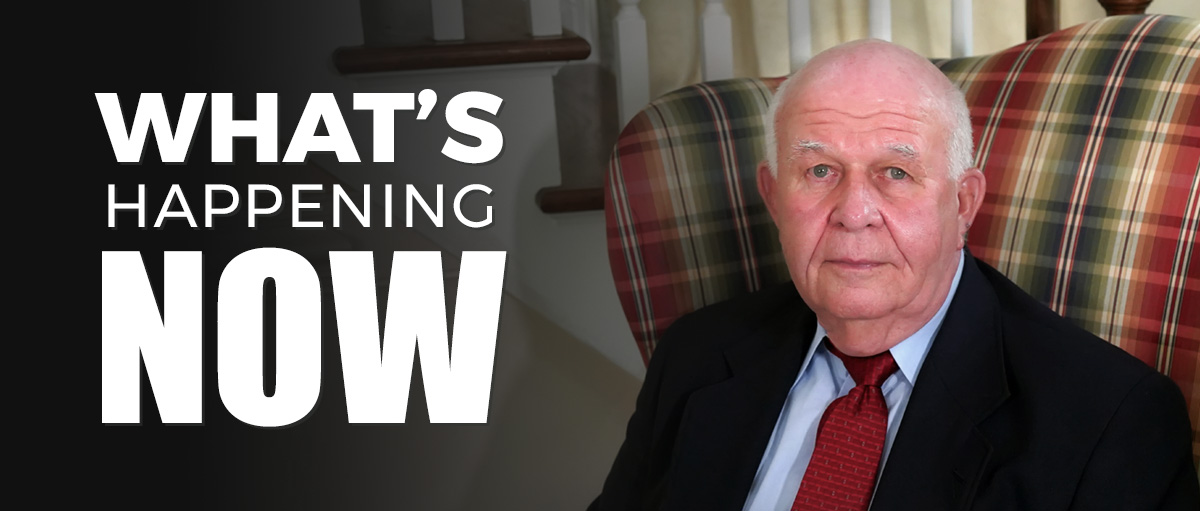Boldly Committed to Truth Telling in the False Face of Fakery
SUPREME COURT OVERTURNS ROE v. WADE: Dobbs v. Jackson Womenís Health Organization (June 24, 2022)
The Court's opinion in Roe itself convincingly refutes the notion that the abortion liberty is deeply rooted in the history or tradition of our people. The inescapable conclusion is that a right to abortion is not deeply rooted in the Nation's history and traditions. On the contrary, an unbroken tradition of prohibiting abortion on pain of criminal punishment persisted from the earliest days of the common law until 1973. The Court in Roe could have said of abortion exactly what Glucksberg said of assisted suicide: "Attitudes toward [abortion] have changed since Bracton, but our laws have consistently condemned, and continue to prohibit, [that practice]."
The dissent is very candid that it cannot show that a constitutional right to abortion has any foundation, let alone one that is 'deeply-rooted in this Nation's history and tradition.' We have held that the "established method of substantive-due-process analysis" requires that an unenumerated right be so 'deeply-rooted' before it can be recognized as a component of the "liberty" protected in the Due Process Clause. But despite the dissent's professed fidelity to stare decisis, it fails to seriously engage with that important precedent-which it cannot possibly satisfy.
In this case, there are five factors that weigh strongly in favor of overruling Roe and Casey: (1) the nature of their error, (2) the quality of their reasoning, (3) the "workability" of the rules they imposed on the country, (4) their disruptive effect on other areas of the law, and (5) the absence of concrete reliance.
The Nature of the Court's Error: An erroneous interpretation of the Constitution is always important, but some are more damaging than others. The infamous decision in Plessy v. Ferguson, was one such decision. It betrayed our commitment to "equality before the law." It was "egregiously wrong" on the day it was decided) and as the Solicitor General agreed at oral argument, it should have been overruled at the earliest opportunity. Roe was also egregiously wrong and deeply damaging. For reasons already explained, Roe's constitutional analysis was far outside the bounds of any reasonable interpretation of the various constitutional provisions to which it vaguely pointed. Roe was on a collision course with the Constitution from the day it was decided, Casey perpetuated its errors, and those errors do not concern some arcane corner of the law of little importance to the American people. Rather, wielding nothing but "raw judicial power" (according to Justice White), the Court usurped the power to address a question of profound moral and social importance that the Constitution unequivocally leaves for the people. Casey described itself as calling both sides of the national controversy to resolve their debate, but in doing so, Casey necessarily declared a winning side. Those on the losing side-those who sought to advance the State's interest in fetal life-could no longer seek to persuade their elected representatives to adopt policies consistent with their views. The Court short-circuited the democratic process by closing it to the large number of Americans who dissented in any respect from Roe. "Roe fanned into life an issue that has inflamed our national politics in general and has obscured with its smoke the selection of Justices to this Court in particular, ever since." (opinion of Justice Scalia in Casey). Together, Roe and Casey represent an error that cannot be allowed to stand.
This Court has previously overruled decisions that wrongly removed an issue from the people and the democratic process. As Justice White later explained, "decisions that find in the Constitution principles or values that cannot fairly be read into that document usurp the people's authority, for such decisions represent choices that the people have never made and that they cannot disavow through corrective legislation. For this reason, it is essential that this Court maintain the power to restore authority to its proper possessors by correcting constitutional decisions that, on reconsideration, are found to be mistaken."
The weaknesses in Roe's reasoning are well-known. Without any grounding in the constitutional text, history, or precedent, it imposed on the entire country a detailed set of rules much like those that one might expect to find in a statute or regulation. Dividing pregnancy into three trimesters, the Court imposed special rules for each. During the first trimester, the Court announced, "the abortion decision and its effectuation must be left to the medical judgment of the pregnant woman's attending physician." After that point, a State's interest in regulating abortion for the sake of a woman's health became compelling, and accordingly, a State could "regulate the abortion procedure in ways that are reasonably related to maternal health." Ibid. Finally, in "the stage subsequent to viability," which in 1973 roughly coincided with the beginning of the third trimester, the State's interest in "the potentiality of human life" became compelling, and therefore a State could "regulate, and even proscribe, abortion except where it is necessary, in appropriate medical judgment, for the preservation of the life or health of the mother." It relied on an erroneous historical narrative.
This elaborate scheme was the Court's own brainchild. Neither party advocated the trimester framework; nor did either party or any amicus argue that "viability" should mark the point at which the scope of the abortion right and a State's regulatory authority should be substantially transformed.
If one takes the view that "personhood" begins when a certain attribute or combination of attributes is acquired, it is very hard to see why viability should mark the point where "personhood" begins. The most obvious problem with any such argument is that viability is heavily dependent on factors that have nothing to do with the characteristics of a fetus. One is the state of neonatal care at a particular point in time. Due to the development of new equipment and improved practices, the viability line has changed over the years. In the 19th century, a fetus may not have been viable until the 32d or 33d week of pregnancy or even later. When Roe was decided, viability was gauged at roughly 28 weeks.
Today, respondents draw the line at 23 or 24 weeks. So, according to Roe's logic, States now have a compelling interest in protecting a fetus with a gestational age of, say, 26 weeks, but in 1973, States did not have an interest in protecting an identical fetus. How can that be? Viability also depends on the quality of the available medical facilities. Thus, a 24-week-old fetus may be viable if a woman gives birth in a city with hospitals that provide advanced care for very premature babies, but if the woman travels to a remote area far from any such hospital, the fetus may no longer be viable. On what ground could the constitutional status of a fetus depend on the pregnant woman's location? And if viability is meant to mark a line having universal moral significance, can it be that a fetus that is viable in a big city in the United States has a privileged moral status not enjoyed by an identical fetus in a remote area of a poor country? In addition, as the Court once explained, viability is not really a hard-and-fast line. A physician determining a particular fetus's odds of surviving outside the womb must consider a number of variables, including gestational age, fetal weight, a woman's general health and nutrition, the quality of the available medical facilities, and other factors.
It is thus only with difficulty that a physician can estimate the probability of a particular fetus's survival. And even if each fetus's probability of survival could be ascertained with certainty, settling on a probability of survival that should count as 'viability' is another matter. Is a fetus viable with a 10 percent chance of survival? 25 percent? 50 percent? Can such a judgment be made by a State? And can a State specify a gestational age limit that applies in all cases? Or must these difficult questions be left entirely to the individual "attending physician on the particular facts of the case before him"? The viability line, which Casey termed Roe's central rule, makes no sense, and it is telling that other countries almost uniformly eschew such a line.52 The Court thus asserted raw judicial power to impose, as a matter of constitutional law, a uniform viability rule that allowed the States less freedom to regulate abortion than the majority of western democracies enjoy.
Workability: Our precedents counsel that another important consideration in deciding whether a precedent should be overruled is whether the rule it imposes is workable-that is, whether it can be understood and applied in a consistent and predictable manner. Casey's 'undue burden' test has scored poorly on the workability scale. For example, the majority opinion found that Pennsylvania's 24-hour waiting period requirement and its informed-consent provision did not impose undue burdens. In fact, the test is ambiguous and has generated a long list of circuit court conflicts. It is an unworkable test.
The Court concluded that both the Trimester Approach of Roe and the Undue Burden Test of Casey are not only outdated, but unworkable.
Our decision returns the issue of abortion to those legislative bodies, and it allows women on both sides of the abortion issue to seek to affect the legislative process by influencing public opinion, lobbying legislators, voting, and running for office. Women are not without electoral or political power. It is noteworthy that the percentage of women who register to vote and cast ballots is consistently higher than the percentage of men who do so. In the last election in November 2020, women, who make up around 51.5 percent of the population of Mississippi, constituted 55.5 percent of the voters who cast ballots.
Abortion is a unique act because it terminates life or potential life. Abortion is inherently different from marital intimacy, marriage, or procreation. And to ensure that our decision is not misunderstood or mischaracterized, we emphasize that our decision concerns the constitutional right to abortion and no other right.
Having shown that traditional stare decisis factors do not weigh in favor of retaining Roe or Casey, we must address one final argument that featured prominently in the Casey plurality opinion. The argument was cast in different terms, but stated simply, it was essentially as follows. The American people's belief in the rule of law would be shaken if they lost respect for this Court as an institution that decides important cases based on principle and not on social and political pressures. There is a special danger that the public will perceive a decision as having been made for unprincipled reasons when the Court overrules a controversial watershed decision, such as Roe. A decision overruling Roe would be perceived as having been made under fire and as a surrender to political pressure and therefore the preservation of public approval of the Court weighs heavily in favor of retaining Roe.
This analysis starts out on the right foot but ultimately veers off course. The Casey plurality was certainly right that it is important for the public to perceive that our decisions are based on principle, and we should make every effort to achieve that objective by issuing opinions that carefully show how a proper understanding of the law leads to the results we reach. But we cannot exceed the scope of our authority under the Constitution, and we cannot allow our decisions to be affected by any extraneous influences such as concern about the public's reaction to our work. That is true both when we initially decide a constitutional issue and when we consider whether to overrule a prior decision. As Chief Justice Rehnquist explained, 'The Judicial Branch derives its legitimacy, not from following public opinion, but from deciding by its best lights whether legislative enactments of the popular branches of Government comport with the Constitution. The doctrine of stare decisis is an adjunct of this duty and should be no more subject to the vagaries of public opinion than is the basic judicial task.' In suggesting otherwise, the Casey plurality went beyond this Court's role in our constitutional system.
Neither the Roe or the Casey decision has ended debate over the issue of a constitutional right to obtain an abortion. Indeed, in this case, 26 States expressly ask us to overrule Roe and Casey and to return the issue of abortion to the people and their elected representatives. This Court's inability to end debate on the issue should not have been surprising. This Court cannot bring about the permanent resolution of a rancorous national controversy simply by dictating a settlement and telling the people to move on. Whatever influence the Court may have on public attitudes must stem from the strength of our opinions, not an attempt to exercise 'raw judicial power.'
Go Back
The dissent is very candid that it cannot show that a constitutional right to abortion has any foundation, let alone one that is 'deeply-rooted in this Nation's history and tradition.' We have held that the "established method of substantive-due-process analysis" requires that an unenumerated right be so 'deeply-rooted' before it can be recognized as a component of the "liberty" protected in the Due Process Clause. But despite the dissent's professed fidelity to stare decisis, it fails to seriously engage with that important precedent-which it cannot possibly satisfy.
In this case, there are five factors that weigh strongly in favor of overruling Roe and Casey: (1) the nature of their error, (2) the quality of their reasoning, (3) the "workability" of the rules they imposed on the country, (4) their disruptive effect on other areas of the law, and (5) the absence of concrete reliance.
The Nature of the Court's Error: An erroneous interpretation of the Constitution is always important, but some are more damaging than others. The infamous decision in Plessy v. Ferguson, was one such decision. It betrayed our commitment to "equality before the law." It was "egregiously wrong" on the day it was decided) and as the Solicitor General agreed at oral argument, it should have been overruled at the earliest opportunity. Roe was also egregiously wrong and deeply damaging. For reasons already explained, Roe's constitutional analysis was far outside the bounds of any reasonable interpretation of the various constitutional provisions to which it vaguely pointed. Roe was on a collision course with the Constitution from the day it was decided, Casey perpetuated its errors, and those errors do not concern some arcane corner of the law of little importance to the American people. Rather, wielding nothing but "raw judicial power" (according to Justice White), the Court usurped the power to address a question of profound moral and social importance that the Constitution unequivocally leaves for the people. Casey described itself as calling both sides of the national controversy to resolve their debate, but in doing so, Casey necessarily declared a winning side. Those on the losing side-those who sought to advance the State's interest in fetal life-could no longer seek to persuade their elected representatives to adopt policies consistent with their views. The Court short-circuited the democratic process by closing it to the large number of Americans who dissented in any respect from Roe. "Roe fanned into life an issue that has inflamed our national politics in general and has obscured with its smoke the selection of Justices to this Court in particular, ever since." (opinion of Justice Scalia in Casey). Together, Roe and Casey represent an error that cannot be allowed to stand.
This Court has previously overruled decisions that wrongly removed an issue from the people and the democratic process. As Justice White later explained, "decisions that find in the Constitution principles or values that cannot fairly be read into that document usurp the people's authority, for such decisions represent choices that the people have never made and that they cannot disavow through corrective legislation. For this reason, it is essential that this Court maintain the power to restore authority to its proper possessors by correcting constitutional decisions that, on reconsideration, are found to be mistaken."
The weaknesses in Roe's reasoning are well-known. Without any grounding in the constitutional text, history, or precedent, it imposed on the entire country a detailed set of rules much like those that one might expect to find in a statute or regulation. Dividing pregnancy into three trimesters, the Court imposed special rules for each. During the first trimester, the Court announced, "the abortion decision and its effectuation must be left to the medical judgment of the pregnant woman's attending physician." After that point, a State's interest in regulating abortion for the sake of a woman's health became compelling, and accordingly, a State could "regulate the abortion procedure in ways that are reasonably related to maternal health." Ibid. Finally, in "the stage subsequent to viability," which in 1973 roughly coincided with the beginning of the third trimester, the State's interest in "the potentiality of human life" became compelling, and therefore a State could "regulate, and even proscribe, abortion except where it is necessary, in appropriate medical judgment, for the preservation of the life or health of the mother." It relied on an erroneous historical narrative.
This elaborate scheme was the Court's own brainchild. Neither party advocated the trimester framework; nor did either party or any amicus argue that "viability" should mark the point at which the scope of the abortion right and a State's regulatory authority should be substantially transformed.
If one takes the view that "personhood" begins when a certain attribute or combination of attributes is acquired, it is very hard to see why viability should mark the point where "personhood" begins. The most obvious problem with any such argument is that viability is heavily dependent on factors that have nothing to do with the characteristics of a fetus. One is the state of neonatal care at a particular point in time. Due to the development of new equipment and improved practices, the viability line has changed over the years. In the 19th century, a fetus may not have been viable until the 32d or 33d week of pregnancy or even later. When Roe was decided, viability was gauged at roughly 28 weeks.
Today, respondents draw the line at 23 or 24 weeks. So, according to Roe's logic, States now have a compelling interest in protecting a fetus with a gestational age of, say, 26 weeks, but in 1973, States did not have an interest in protecting an identical fetus. How can that be? Viability also depends on the quality of the available medical facilities. Thus, a 24-week-old fetus may be viable if a woman gives birth in a city with hospitals that provide advanced care for very premature babies, but if the woman travels to a remote area far from any such hospital, the fetus may no longer be viable. On what ground could the constitutional status of a fetus depend on the pregnant woman's location? And if viability is meant to mark a line having universal moral significance, can it be that a fetus that is viable in a big city in the United States has a privileged moral status not enjoyed by an identical fetus in a remote area of a poor country? In addition, as the Court once explained, viability is not really a hard-and-fast line. A physician determining a particular fetus's odds of surviving outside the womb must consider a number of variables, including gestational age, fetal weight, a woman's general health and nutrition, the quality of the available medical facilities, and other factors.
It is thus only with difficulty that a physician can estimate the probability of a particular fetus's survival. And even if each fetus's probability of survival could be ascertained with certainty, settling on a probability of survival that should count as 'viability' is another matter. Is a fetus viable with a 10 percent chance of survival? 25 percent? 50 percent? Can such a judgment be made by a State? And can a State specify a gestational age limit that applies in all cases? Or must these difficult questions be left entirely to the individual "attending physician on the particular facts of the case before him"? The viability line, which Casey termed Roe's central rule, makes no sense, and it is telling that other countries almost uniformly eschew such a line.52 The Court thus asserted raw judicial power to impose, as a matter of constitutional law, a uniform viability rule that allowed the States less freedom to regulate abortion than the majority of western democracies enjoy.
Workability: Our precedents counsel that another important consideration in deciding whether a precedent should be overruled is whether the rule it imposes is workable-that is, whether it can be understood and applied in a consistent and predictable manner. Casey's 'undue burden' test has scored poorly on the workability scale. For example, the majority opinion found that Pennsylvania's 24-hour waiting period requirement and its informed-consent provision did not impose undue burdens. In fact, the test is ambiguous and has generated a long list of circuit court conflicts. It is an unworkable test.
The Court concluded that both the Trimester Approach of Roe and the Undue Burden Test of Casey are not only outdated, but unworkable.
Our decision returns the issue of abortion to those legislative bodies, and it allows women on both sides of the abortion issue to seek to affect the legislative process by influencing public opinion, lobbying legislators, voting, and running for office. Women are not without electoral or political power. It is noteworthy that the percentage of women who register to vote and cast ballots is consistently higher than the percentage of men who do so. In the last election in November 2020, women, who make up around 51.5 percent of the population of Mississippi, constituted 55.5 percent of the voters who cast ballots.
Abortion is a unique act because it terminates life or potential life. Abortion is inherently different from marital intimacy, marriage, or procreation. And to ensure that our decision is not misunderstood or mischaracterized, we emphasize that our decision concerns the constitutional right to abortion and no other right.
Having shown that traditional stare decisis factors do not weigh in favor of retaining Roe or Casey, we must address one final argument that featured prominently in the Casey plurality opinion. The argument was cast in different terms, but stated simply, it was essentially as follows. The American people's belief in the rule of law would be shaken if they lost respect for this Court as an institution that decides important cases based on principle and not on social and political pressures. There is a special danger that the public will perceive a decision as having been made for unprincipled reasons when the Court overrules a controversial watershed decision, such as Roe. A decision overruling Roe would be perceived as having been made under fire and as a surrender to political pressure and therefore the preservation of public approval of the Court weighs heavily in favor of retaining Roe.
This analysis starts out on the right foot but ultimately veers off course. The Casey plurality was certainly right that it is important for the public to perceive that our decisions are based on principle, and we should make every effort to achieve that objective by issuing opinions that carefully show how a proper understanding of the law leads to the results we reach. But we cannot exceed the scope of our authority under the Constitution, and we cannot allow our decisions to be affected by any extraneous influences such as concern about the public's reaction to our work. That is true both when we initially decide a constitutional issue and when we consider whether to overrule a prior decision. As Chief Justice Rehnquist explained, 'The Judicial Branch derives its legitimacy, not from following public opinion, but from deciding by its best lights whether legislative enactments of the popular branches of Government comport with the Constitution. The doctrine of stare decisis is an adjunct of this duty and should be no more subject to the vagaries of public opinion than is the basic judicial task.' In suggesting otherwise, the Casey plurality went beyond this Court's role in our constitutional system.
Neither the Roe or the Casey decision has ended debate over the issue of a constitutional right to obtain an abortion. Indeed, in this case, 26 States expressly ask us to overrule Roe and Casey and to return the issue of abortion to the people and their elected representatives. This Court's inability to end debate on the issue should not have been surprising. This Court cannot bring about the permanent resolution of a rancorous national controversy simply by dictating a settlement and telling the people to move on. Whatever influence the Court may have on public attitudes must stem from the strength of our opinions, not an attempt to exercise 'raw judicial power.'
| Fines and jail for Swiss citizen that overheat their homes | Local News & Expression, Editorials, For Love of God and Country, Op-Ed & Politics | America, The Land That I Love |
























